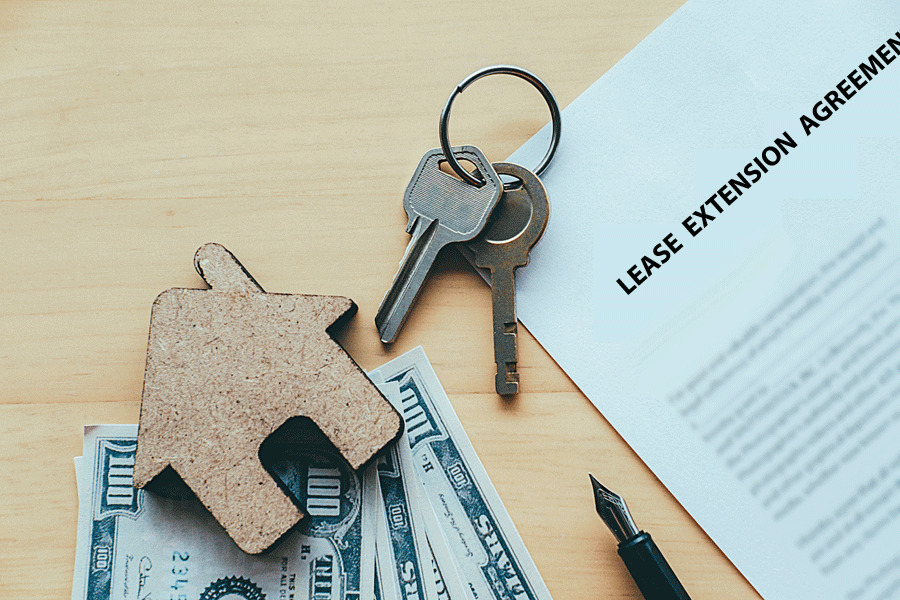This type of lease agreement is unique and exclusive to the residential properties alone. It basically spells out the terms and conditions of the occupancy of that building facility while at the same time incorporating the rights and the obligations of both the tenant and the landlord.
By legal definition, it is stated as:
A residential lease agreement is a contract/agreement between a landlord and a tenant who intends to rent out or rent residential property respectively.
The agreement is used to outline the rights and obligations of the landlord and tenant as well as the terms and conditions of tenancy during the lease term, which is usually one (year) – fixed term. This agreement should follow applicable state statutes and must contain all disclosures as required by law. The landlord and tenant are bound to the agreement for the set-out period if they both signed the document.
This lease agreement can be used to rent residential properties such as apartments, condos, family houses, townhouses, duplexes, and such.
Download Free Templates
By states
Things to Know
This agreement is binding in that its provisions have to be adhered to by both parties. As per the agreement, the landlord leases out a portion of his property to a tenant for a pre-agreed amount of money. In many cases, it lasts for 12 months or longer, not shorter.
It is necessary to sign this agreement to stay on the safe side of the law. The agreement yet again comes in handy when handling any disputes from the stay on the premises. While entering the agreement, it is important that you do so in accordance with the state laws that govern the same.
The reason underlying this assertion is pretty simple. Any agreement that is entered into has to enjoy the full backing of the law. It is only in this way that any disputes that emerge from its implementation may be sorted out expeditiously.
When viewed on all sides, this agreement is beneficial to and indeed shields the landlord and the tenant alike. To further make it safer and more reliable, some security deposits have to be remitted. This amount is held in trust until such a time that the tenancy period comes to an end.
Common names
Other names of this lease agreement are:
- Residential rental agreement
- Rental agreement
- Lease agreement
- Commercial lease agreement (if the property is converted for commercial ends)
Advantages of it
As a landlord, the agreement gives you some security in case your relations with the tenant get strained. It forms the basis upon which any future disputes may be handled.
As a tenant, you want some surety that the number of rental payments you make will not just spike overnight. It is only by clearly stipulating these details on paper that you may be guaranteed that. Then, you also want some added peace of mind while dealing with your landlord. How else may you be sure of that save for having the terms governing your relationships anchored on paper?
Standard Vs. Monthly Lease
A residential lease can be a standard or month-to-month lease. The option to either is dependent on the landlord’s and the tenant’s preferences. Each type of lease has its merits and demerits. The differences between the two leases are as follows.
| Standard Lease | Month-to-Month Lease |
|---|---|
| Has a fixed term (start and end date) | It is renewed every month(tenancy-at-will) |
| It does not end early | The lease can be terminated/ended at any time if it is in accordance with the Month-to-Month Termination Laws. |
| Difficult to implement changes- rent cannot be increased or reduced during the lease term | Rent can easily be changed (increased or decreased) with notice. |
| Convenient for long-term tenants | Convenient for short-term tenants |
Understanding Residential Lease Agreement
This agreement covers important aspects of a lease. To understand how this is achieved, there is a need to investigate various aspects of the agreement. This way, when coming up with an up to standards agreement, one can have a mental picture of what is expected and how to approach it.
What to include in a residential lease agreement?
This agreement for residential lease can either be standard or comprehensive. Despite the common elements found in both residential leases, they differ in the amount of information they give about a lease.
A standard agreement will generally include the following information:
- The contact information of both the tenant and the landlord. This includes their names and official mailing addresses.
- The property details or description, which includes the address, square footage of the rental space, amenities, etc.
- The lease specifications, that is, the type of lease, length of the lease term, etc.
- Rent payment details include the rental rate, payment frequency, due date, penalties for late payment, and any other financial details such as the amount of security deposit (if applicable).
- The applicable rental rights and obligations of the involved parties (landlord and tenant).
- Any additional information relevant to the lease, for example, dispute resolution methods, which could be mediation, arbitration, or both. If there are signing incentives for the tenant, they should be stated. Where the tenant has been awarded an option to purchase (referred to as a rent-to-own) and/or with an option to renew, it should be declared. Apart from this, other information includes:
- Definition of the ‘early termination lease’ and when it may be invoked
- How the ‘Non-Sufficient Funds’ are handled and sorted out
- Utilities, their place in the rental amounts, and what happens in the case of a default
- Who is responsible for yard maintenance and cleanliness?
- Subletting – Is it allowed? If it is, what circumstances govern the sub-letting of spaces?
- General repairs/maintenance practices, who pays for them, and how are they implemented?
- Pets, their handling, size, and other circumstances of utilization
- Smoking and Insurance policies which the building subscribes to
For a comprehensive residential lease agreement, the following information should be provided:
- Specify if the property/space will be furnished or not. A description of the same can be included.
- If a property manager is looking after the property on the landlord’s behalf, they should be identified by name.
- If the landlord permits the tenant to run a home business on the property, it should be stated in a comprehensive agreement.
- A statement of a pet deposit or fee, if it is applicable.
- Information about a guarantor who agrees to assume the tenant’s financial obligations should the tenant ever default on rent can be included. A guarantor can be a third party, such as a parent, sibling, close friend, or relative.
Both agreements should have the tenant’s and landlord’s signatures to be legally binding.
Who requires a residential lease agreement?
This agreement is meant to protect the landlord and tenant of a residential property. It is a powerful document that can define how beneficial the lease agreement will be to the involved parties.
Therefore, it is used by various individuals and organizations in the residential leasing market, such as:
- Property holders are looking for residential tenants.
- Persons searching for residential spaces/property to rent.
- Apartment owners lease apartments to relatives or friends.
- Landlords or tenants willing to rent a property with an option to buy.
- Property owners, real estate managers, and tenant placement service providers.
Should a residential lease end on a set date?
The date when a residential will end is dependent on what the landlord and the tenant agree on. Usually, it will be at the discretion of the landlord to determine when the lease will end, but it is negotiable. There are two alternatives in this regard.
The first alternative is having a predetermined end date for the lease. This defines a fixed-term lease. If the end date is predetermined, calendar dates are used to specify when the tenancy will start and end. Tenancy under this type of lease is normally at a fixed rental rate. At the end of the residential lease, the landlord and tenant can decide if they would like to sign a new lease into effect, with updated dates and specifics, of course.
The other alternative is having a residential lease without an end date. Such a lease is usually referred to as an automatic renewal or periodic tenancy lease. It is automatic in that the lease is automatically renewed after a specified duration, which could be every month, bi-annually, or yearly. With this type, the lease remains valid until either party issues a notice of termination.
How to rent out a room in my house
It is possible to rent out a room in one’s house rather than the entire house/property. If this is the case, a room rental lease agreement should be used to outline the rent and due date, specify the area being rented, and rights and responsibilities to the tenant. As the landlord is still occupying a portion of the premises, an agreement would be important in communicating the boundaries and expectations of either party during the period of tenancy. Boundaries include house rules, occupants, how guests should be handled, noise, etc.
What is meant by rent-to-own?
Rent-to-own is a lease provision normally known as an option to purchase. It grants the tenant an opportunity to purchase a rented space/property from their landlord. The landlord will usually charge a non-refundable fee for awarding this option; he or she declares that the tenant can buy the property and at what price. If the tenant opts not to buy the property, the landlord keeps the fee.
An option to purchase is often used when a landlord is willing to sell a home or property, but the tenant in question does not qualify for a lender-based mortgage. This could be due to either a poor credit score or an inability to raise the asking price or deposit.
Renting a Home
Renting or leasing for a landlord and a tenant can be a lengthy process that involves time and money. It requires immense thinking in evaluating and negotiating to get a deal that is most beneficial to a person. Most if not all leasing processes have moved online, and as a result, one can conveniently evaluate multiple listings at the comfort of a home or office. This migration has, however, not substituted major steps of renting space.
We shall investigate the steps of renting a home below:
Prepare the property
The first step as the landlord will be prepping the home by having it cleaned to look presentable and modern before taking photos to post online for potential tenants to see. The remaining items from the previous tenant should be removed to showcase the outlook of the unoccupied space. Any appliances and furnishings that come with the home should be recorded. Scoffs or marks on the wall should be repaired together with any floor tear.
Decide the rent
The landlord should determine the rental rate they would like to charge their tenant. The landlord should first establish the home features, such as the number of bedrooms, size, bathrooms, design, amenities, and any other features they can use to compare with other similar properties listed in the area. Comparing with other similar properties helps in setting a rental price that matches the market conditions and fair. The market rates can be determined from any available listing sites.
Place the property online
Once the amount of rent to be charged has been determined, the landlord should take clear, enticing, and presentable pictures of the home and post/list the property online. In the USA, there are various platforms one can use to market their property. There are those used for long-term leases, that is, more than 1-year longer, and others for short-term leases, that is a year or less.
Meet potential tenants
Once the property ads are up online, potential tenants can view and reach out if they would like to view the property. Landlords can choose to either hire a real estate agent or conduct the viewing themselves. Viewing should be scheduled after hours or on weekends to allow tenants to have an easy time when planning on visiting the home/property. When meeting up with prospective tenants, the landlord should bring a copy of the rental application or forms to get the potential tenant’s information to assist with the screening process.
Screen the tenant
Once the tenant shows interest in the property, the landlord should proceed to carry out the screening process. Screening of tenants includes conducting credit, background, and criminal checks. There is software available to help landlords screen tenants; however, these services come at a small fee. The various software that can be used for the process.
The landlord should avoid having the tenant spend more than 30-35% of their monthly income on rent. Should the landlord determine that the tenant is financially illegible to rent the space but qualified on other set criteria, they can opt to have the tenant rent the space if they can obtain a co-signer to guarantee the lease.
Negotiate the lease
Negotiations are an opportunity for each party to make the deal more suitable for them. As the landlord, one should be open to negotiations but remain focused on collecting as much rent as possible while mitigating his or her risks. If the tenant presents themselves as financially able to be a stable tenant, as the landlord, one may choose to award them a discount on the monthly rental rates and/or other utilities and services. This is because the landlord is assured of getting their due at the right time and fewer disputes emanating from late payments. Negotiating is affected by multiple factors, market conditions being one of them.
Other major factors affecting negotiation include:
- Employment History – Tenants with a long stable job history, which can be being employed at a company for 3-5 years, are considered more preferred. Lesser employment periods or long unemployment periods brand the tenant as a high-risk tenant.
- Current Pay Stubs – To prove the tenant’s income, the landlord will normally ask to see the applicant’s pay stubs for the past two weeks. Proof of payment can be obtained directly from employment or through a bank statement.
- Past Income – Landlords should request the tenant to present their tax filings with the IRS (Internal Revenue Service) for the last 2-3 years. For employed tenants, this will be through Form W-4, while for self-employed tenants or independent contractors, it is through Form 1099.
- Rent Prepayment – When a tenant pays rent in advance at the beginning of the lease (usually rent for more than 3 months); they can persuade the landlord to reduce the monthly rental rates. It also shows financial ability.
- Security Deposit – Being able to raise the security deposit when required can boost one’s negotiations. However, for residential leases, a tenant may fail to maximally take advantage of this as most States have a set maximum security amount that landlords can ask for.
- Landlord History – Previous landlords can be used as references. Once the new landlord has established that the tenant had a good relationship with previous landlords, they would be willing to consider the tenant’s proposal.
- Credit report – If the tenant has a good credit history, their landlord can choose to ease some of the terms of the lease.
- Eviction history – Tenants with an eviction history for defaulting or misconduct are undesirable. This may taint the tenant’s image and thus their negotiation advantage.
Write the Lease Agreement
Once the tenant has been approved and both parties have agreed to the terms and expectations of the other, it is time to put it into writing. The lease should address the most pertinent details of the lease.
This includes:
The landlord’s and tenant’s Information
The agreement of lease should outline the details of the tenant and the landlord. This will include their official names and contact information. If more than one tenant will be paying for the rent, they should be declared as ‘tenants.’ However, other people expected to live in the space, such as children, should be outlined as ‘occupants.’
Describe the Property
The agreement should give a description of the property. The description helps illustrate what the tenant is paying for. In the description, information such as availability of parking and other services such as laundry, etc., should be included.
Rent Amount
The agreement of lease should outline the agreed rental rates. A last check can be done within the surrounding areas to ascertain that no one is being taken advantage of. The agreement should list what has been factored in the rent; for example, utilities, operating expenses, and services can sometimes be factored in. This section should also address how the payments shall be made and the due date.
How late payment will be handled should also be included. The late fees are usually at a fixed rate for each day past the due date or a single penalty after the due date. Most States have an established limit, so state laws should be referenced to ensure the agreement is within its limits.
Utilities and services
The agreement should outline the utilities and services that are part of the lease. Such utilities and services include:
- Electricity
- Trash / Recyclables
- Cable / Internet
- Lawn Care (suburban areas)
- Water / Sewer
- Heat (gas, propane, etc.)
- Air Conditioning
- Snow Removal (suburban areas)
Furnishings
Where furnishing was part of the agreement, the tenant should confirm that every promised appliance and furniture is available. Remember, at the end of the residential lease, the landlord will be authorized to claim whatever was outlined in the agreement, and as the tenant, one is liable for its availability. A move-in checklist should be used to smoothen this process.
Lease term
It should then be stated in the agreement how long the tenant is expected to be staying on the premises. For a standard residential lease, it is normally 12 months. The tenant should declare the time period that best works for them.
Security deposit
As most leases will require a security deposit, it is important to declare how much is to be paid as a security deposit and when it is to be paid. Security deposit acts as a safety net for the landlord should the tenant fail to pay rent for a given period, vacate the premises early, or cause damage to the property by the end of the lease. If there are damages to the premises at the end of the lease, the landlord should produce an itemized list of all repairs done and the costs. However, if none of the mentioned events happen, the landlord is expected to refund the security deposit at the end of the lease.
Early termination
The agreement should declare how termination would be handled if deemed necessary before the lease term ends. Termination can be at a fee (usually a month’s rent) or not, depending on how both parties agree. If a fee is required, the terminating party should issue the other party with a 30 days’ notice. This section of the agreement is solely dependent on the negotiations between the landlord and the tenant; there are no state laws governing it.
Smoking policy
The next item should be to outline an applicable smoking policy. The inclusion of a smoking policy is more common these days; for example, the State of California requires every lease to declare the smoking policy on the property.
Pets
The other item to include is the pet policy of the landlord. Most landlords are hesitant about permitting pets. However, if having a pet is allowed, the agreement should declare the exact type of pets the landlord allows within the premises. The landlord can further limit the maximum weight the animal should weigh for liability (most dangerous dogs are larger) and damage to the property.
Most states allow the landlord to impose an additional pet fee that is separate from the security deposit. The Pet Lease Addendum can be consulted when setting rules for pets on the property.
Lead-based paint disclosure
The agreement should declare to the tenant if the property has lead-based paint. The federal law (42 U.S. Code § 4852d) states that the landlord must issue the disclosure for buildings built before 1978. The disclosure directs the tenant to contact the landlord immediately should they see any chipping, cracking, or deteriorating paint.
Once all the relevant details have been written down, and the terms and conditions agreed on, the landlord and tenant can sign the document to make it legally binding.
Tenant moves in
Once the tenants have signed the agreement and paid all the expected deposits and fees, they should be given access to the premises and all common areas, and the lease can start on the agreed day of moving in. If the tenant moves in earlier than the set date, they should pay a pro-rated amount depending on the number of days early they moved in. For example, if the tenant moves in ten days early in a $2000/mo. rental. They will be expected to pay a third (1/3) of the rent, which would be equal to $666.66.
The lease agreement binds the tenant and the landlord throughout the lease term, and both parties are expected to comply with the terms or else face eviction or default, respectively.
Terminating the Lease
Either party may initiate the termination of the lease. The following is a breakdown of how the lease may be terminated:
By landlord
- Violation of the Terms of the Lease – Many states enshrined in their laws the clause that allows the landlord to terminate the lease if the tenant violates the terms of the lease. In this case, the landlord has to serve the warning notice (notice to comply or quit) within a specified time to correct the violation. Otherwise, the agreement is considered terminated.
- Dangle a Payout – Try and entice the tenant to accept a payout that will see them vacate your premises earlier or prematurely. You may, for instance, refund the security deposit or offer to cover their moving-out costs.
- Provide Free Rent – As a landlord, you may offer to have the tenant stay in your premises free of charge until the date you want him or her to vacate your property.
By tenant
The rules that govern the termination of this lease varies from state to state. Generally speaking, a tenant has to remain in the facility until the expiration of the lease agreement. Some exceptions to this requirement exist, though. They are explained hereunder:
- Military – If a tenant enlists in active military service, he is generally allowed under federal law, to terminate the lease earlier. This is to enable the said tenant to attend to his duties often in a remote location, typically overseas.
- Change of Job Location – The same federal law yet again, empowers the tenants to vacate the premises prematurely if their employer happens to relocate their state to that of another.
- Violation of the Terms of the Lease – Many states enshrined in their laws the clause that allows the tenants to terminate the lease if the landlord violates the terms of the lease. These violations generally pertain to the deterioration of the safety and habitability of the homes they lease out.
- Significant Damages to the Rental Units – In the event of significant damages to the rental units, the tenant is yet again granted the leeway to move out before the expiration of the lease. These damages may arise from natural disasters, wear and tear, and fire outbreaks.
- Anything Goes – Lastly, some states give the landlord and the tenant the freedom to initiate the termination without any valid reason. This has to happen within 30 days or 60 days in advance. It is definitely in your best interest to ascertain whether yours indeed is eligible for such a privilege.
Below are the strategies the tenant has to follow to affect the termination after the issuance of the notice of the termination of the lease agreement:
- Surrender security deposit – You may, as a tenant, surrender a security deposit to your landlord as a gesture that you are intent on vacating his premises.
- Pay an extra month’s rent in advance – In case you did not pay the security deposit while entering the premises, you may opt to pay an extra month’s rent in advance.
- Invoke financial hardship – If your inability to pay the rent is occasioned by the loss of a job or savings, you may think of invoking financial hardships. This way, your landlord may opt to release you peacefully rather than opt for forceful evictions.
- Claim domestic violence – As a last measure, you may also claim domestic violence. Some states actually allow the tenants to breach the agreements without necessarily suffering any penalties. Do not hesitate to invoke the same when caught between a rock and a hard place.
Most states allow for the penalization of the tenant or landlord who violates the agreement before the same has expired. Mostly, the party in error is sued, and the corresponding damages are taken care of appropriately.
Frequently Asked Questions
There are no boundaries as to how long a lease should last. It can be a month-to-month lease, six months long, one year, or more. All leases are not required to be of the same duration. Some leases allow the tenant to extend the term after the first term is completed.
Lease agreements that are less than one year do not need to be notarized or witnessed in all 50 States. However, for those that are longer and involve a lot of money, it is recommended that they are witnessed and/or notarized. For example, in Florida, leases longer than one year dictate that additional signing requirements such as be witnessed to be done.
The addition of tenants or occupants should be done according to the lease agreement guidelines. Standard residential agreements state that new tenants should specifically be added as co-tenants. Therefore, one can add a roommate if they follow the guidelines of the agreement. The wrongful addition of a new tenant or occupant can subject the tenant to criminal and financial screening as well as a rental history review.











